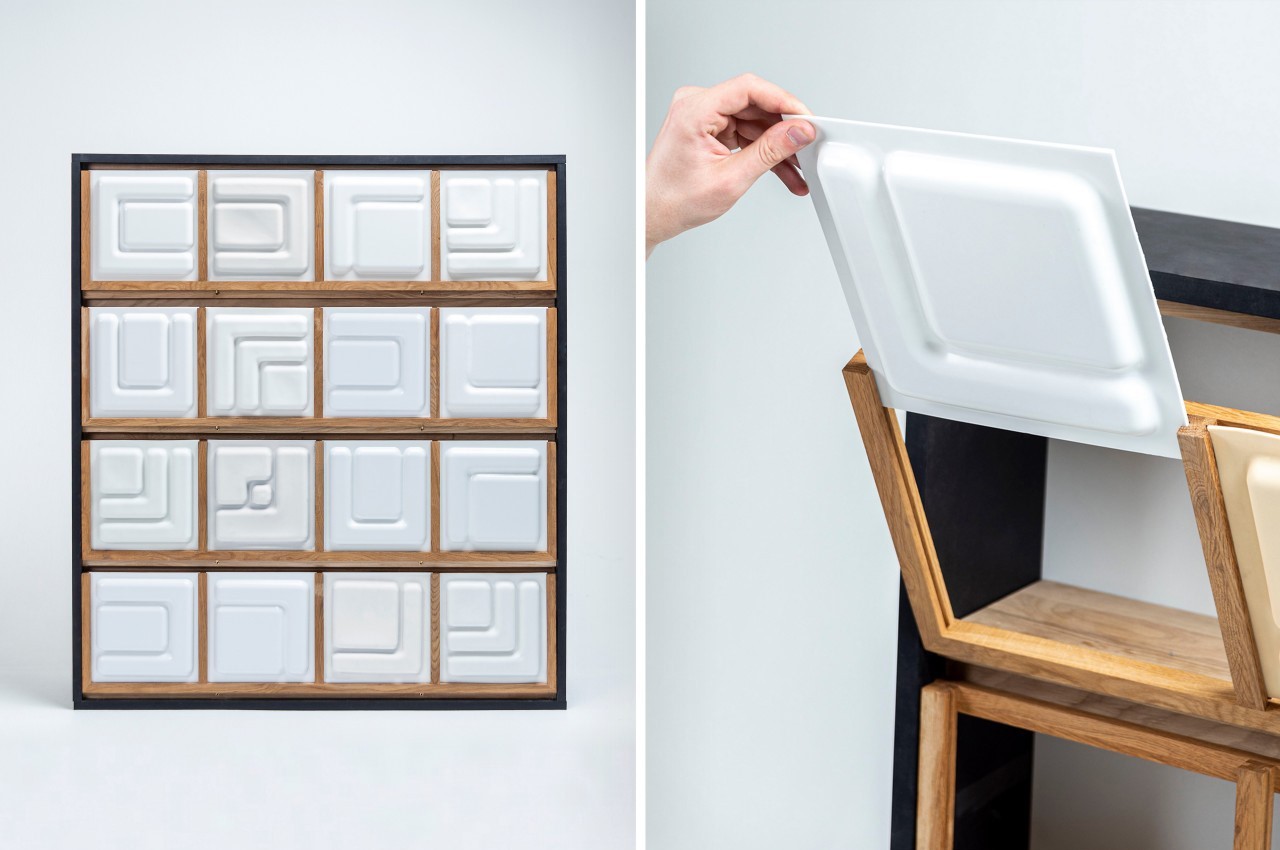
The kitchen has transcended its traditional role as merely a space for food preparation. Today, considerable attention is paid to its aesthetics, from the choice of cabinetry to the color scheme. A prevailing trend involves integrating patterned tiles into both the floors and walls, transforming them into interesting design elements. Notably, the backsplash serves a dual purpose, not only safeguarding the walls from food splatters but also serving as a canvas for creative expression. Additionally, ensuring the floors are slip-resistant is crucial for preventing accidents and maintaining safety in the bustling kitchen environment.
Designer: Florian Beser
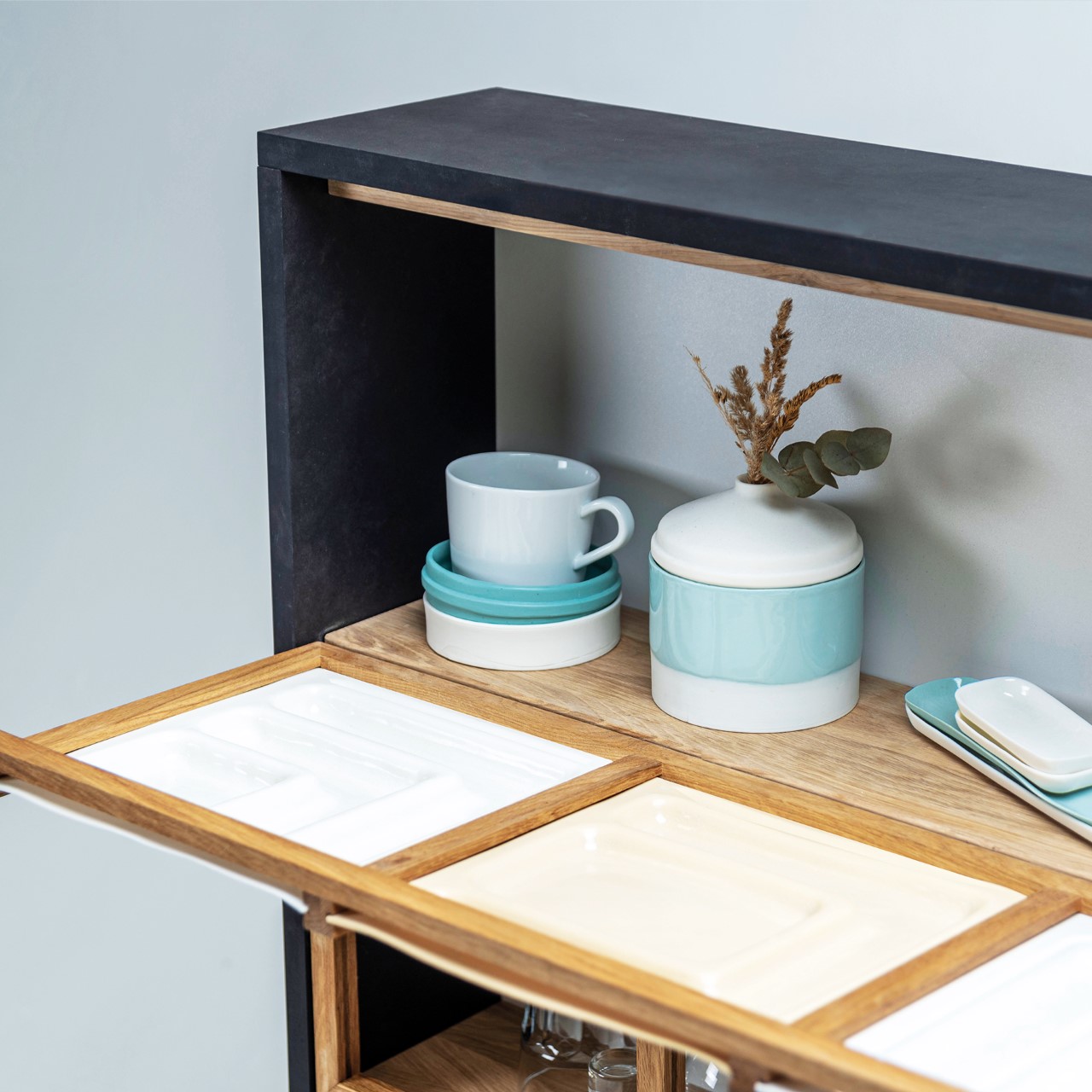
1. Introduce Jewel Tones
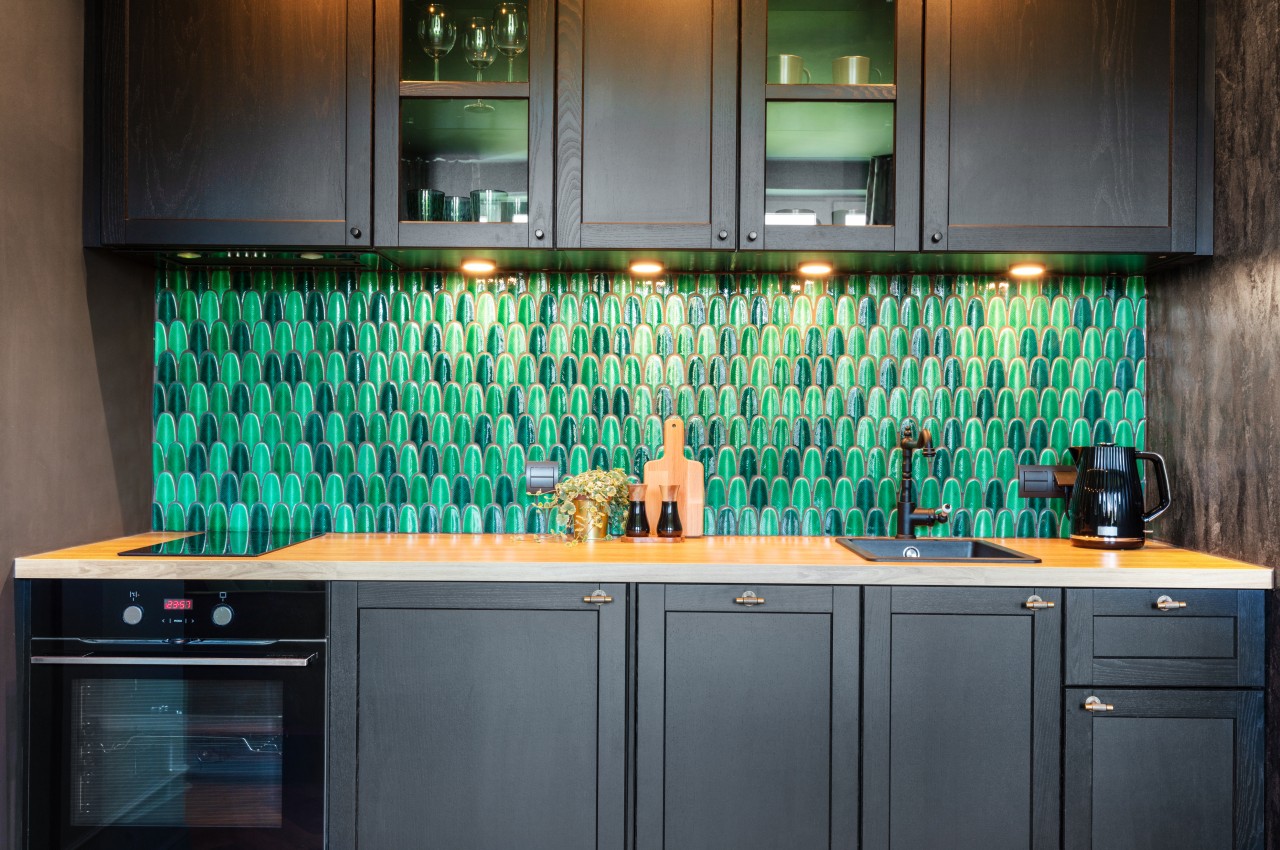
Image courtesy of: photocreo
The varied jewel tones of green in the backsplash form an intriguing pattern, beautifully contrasting with the dark charcoal grey cabinets, elevating the kitchen’s appearance. They introduce richness and a touch of biophilia, as the green pattern tiles mimic the appearance of leaves within this compact kitchen unit.
2. Say Yes to Chequered Tiles
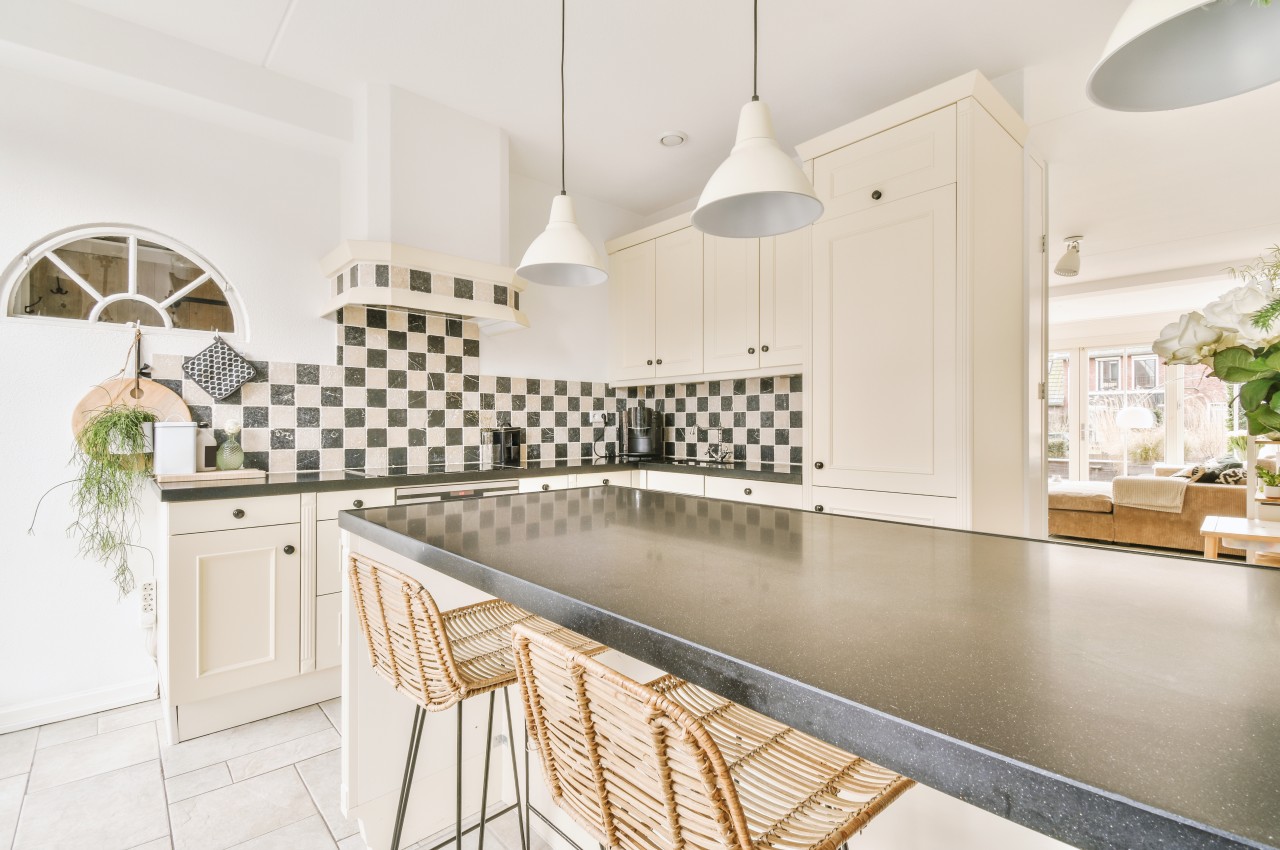
Instead of opting for patterned tiles, consider using black and white tiles to craft an intriguing pattern on the backsplash of this all-white kitchen. This choice breaks the monotony of the white kitchen, and the black countertop complements the backsplash tiles. Also, hanging pendant lights from an all-white ceiling can enhance the aesthetic appeal.
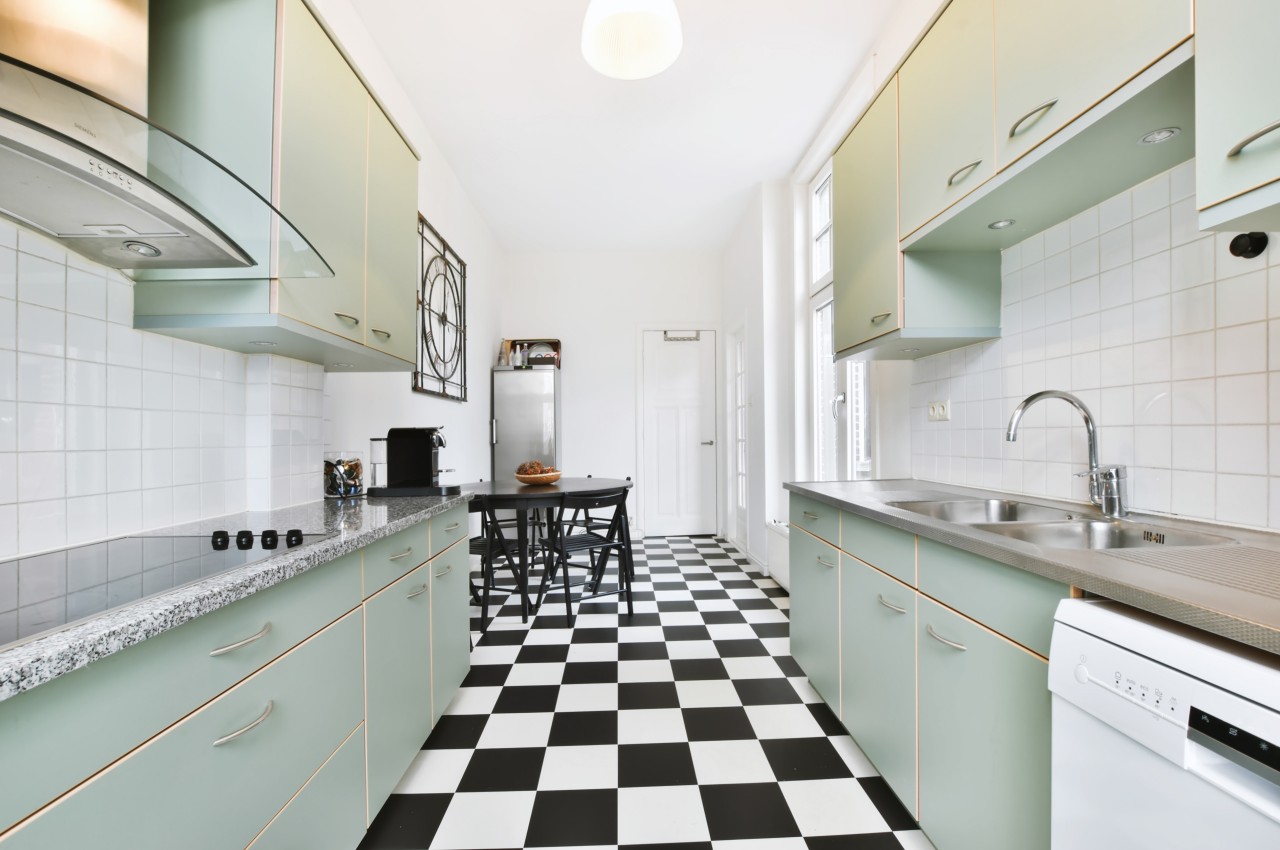
Incorporating chequered tiles for the flooring disrupts the off-white and pastel-green kitchen and creates a bold pattern on the floor, offering a striking contrast.
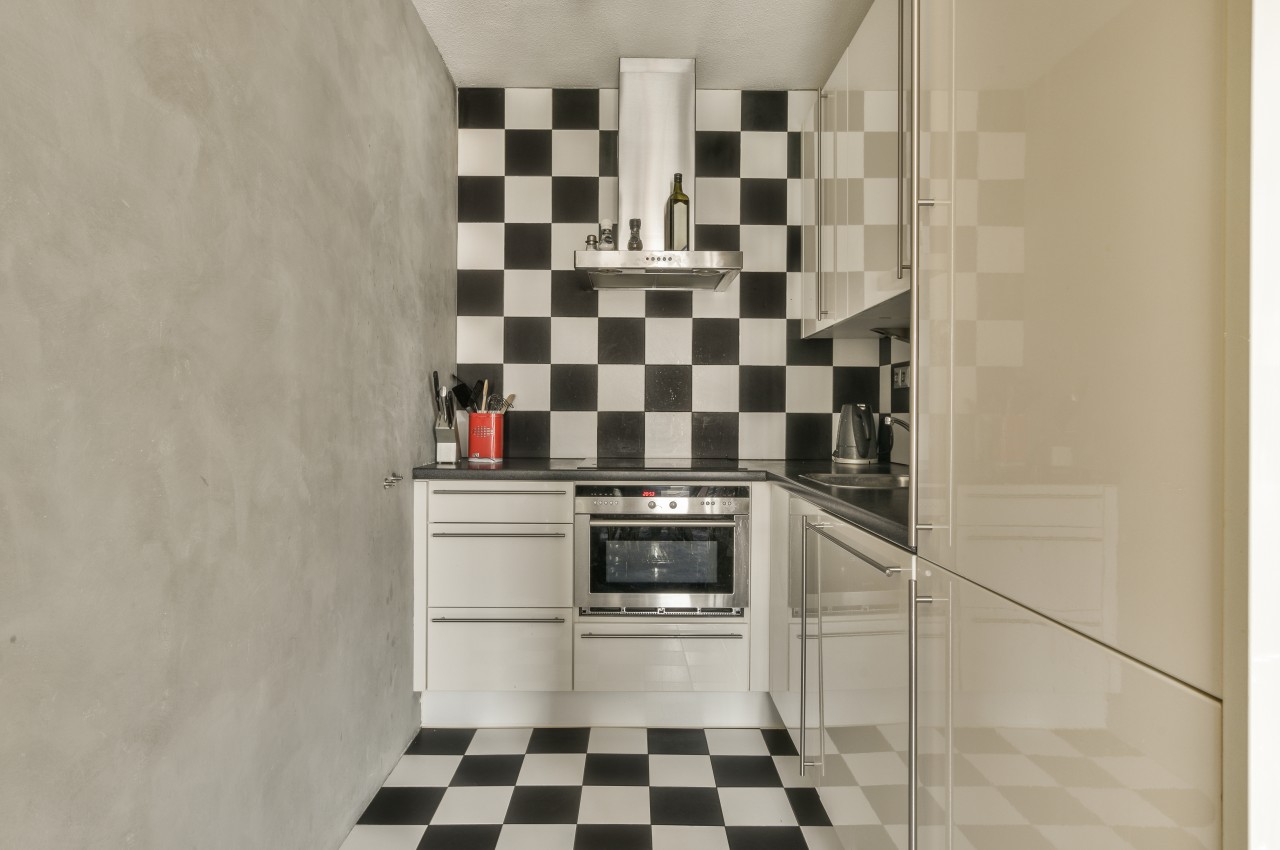
Image courtesy of: pro_creator
In this compact kitchen, the chequered tiles extend seamlessly from the floor to the ceiling, establishing a sense of continuity in the kitchen’s design.
3. Add Geometric Patterns
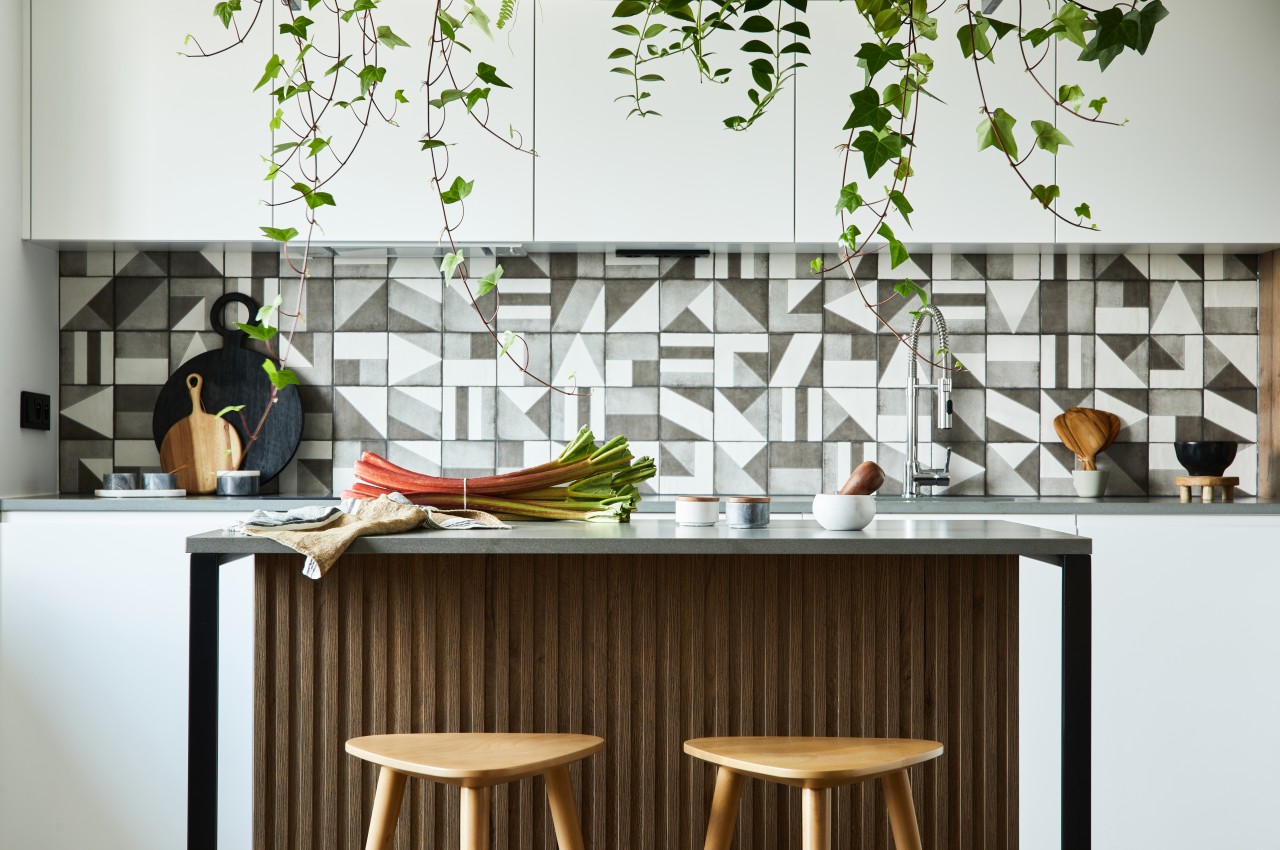
Image courtesy of: FollowTheFlowStudio
Geometric patterns arranged spontaneously generate a dynamic composition, infusing a vibrant energy ideal for modern and minimalist kitchens.
4. Consider Hexagonal Patterns
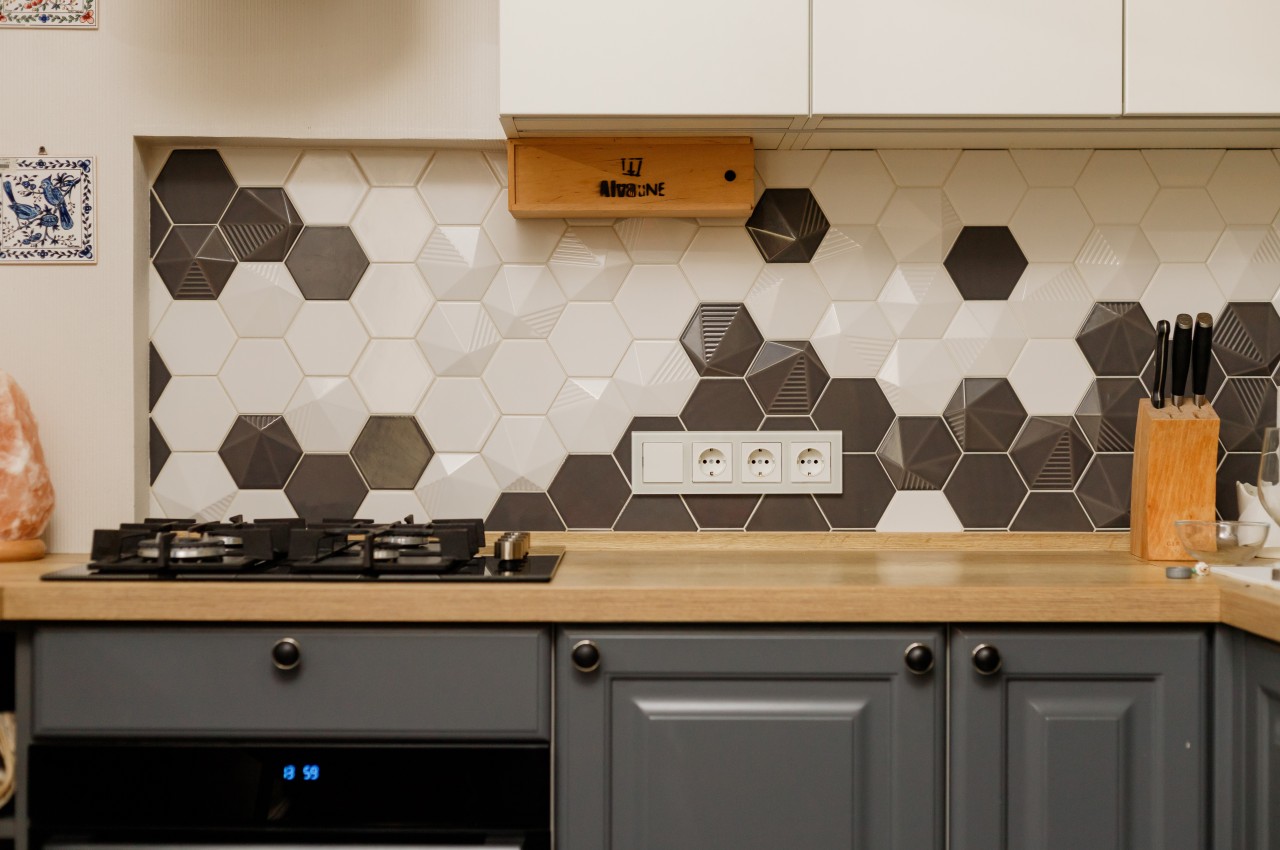
Image courtesy of: Vladdeep
The hexagonal pattern, nature’s favorite geometric motif, is showcased through a combination and random arrangement of black and white tiles, forming a stunning composition. This interplay contrasts with the white overhead cabinets, black base cabinets, and wooden countertops.
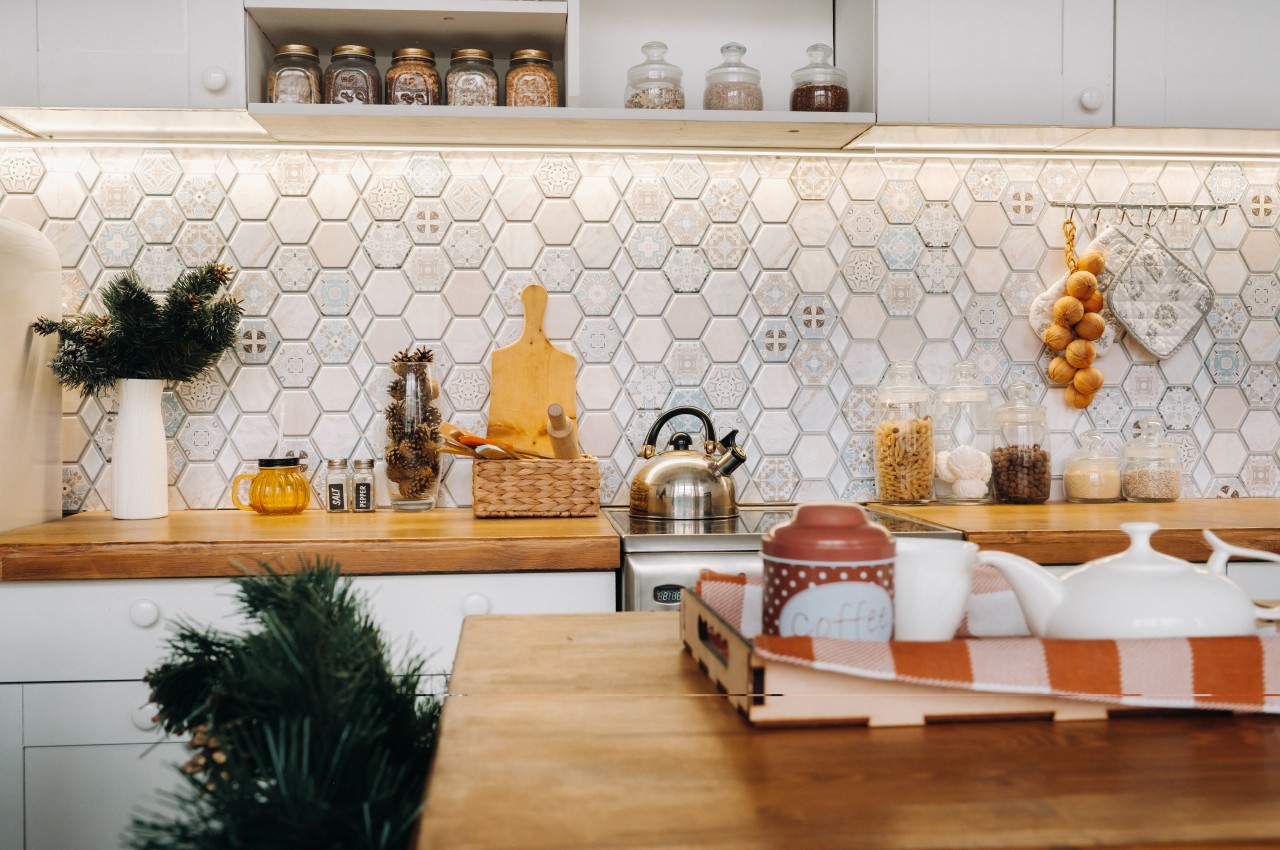
Image courtesy of: Lobachad
If you prefer to avoid a stark contrast, the hexagonal patterns can harmonize with the off-white overhead and base cabinets. The wall tiles feature a blend of plain and patterned tiles to achieve a subtle appearance, while the hexagonal grid forms the underlying pattern.
5. Beautify with Wall Art
Who says that patterned tiles are solely reserved for backsplashes and floors? Sensory tiles or intricately textured and patterned ones can serve as captivating wall art, elevating the kitchen’s aesthetic. However, if opting for textured tiles, it’s advisable to avoid placing them near the cooktop. The textured surfaces may trap cooking residue, making maintenance challenging over time, which is one drawback to consider.

Designer: Duffy London
The Abyss Wall Tile is a versatile and sustainable wall decoration inspired by the ocean’s depths. Crafted with hexagonal tiles featuring intricate layered designs reminiscent of contour maps, this innovative product offers endless possibilities for wall arrangements. With three distinct patterns available, each hexagon seamlessly integrates to create a unified composition, allowing for easy customization and modification. Made from plexiglass, recycled plastic, and brushed stainless steel, the Abyss Wall Tile is visually captivating and environmentally friendly. One can bring the beauty of the abyss into your kitchen space with this handcrafted, flexible wall decor solution.
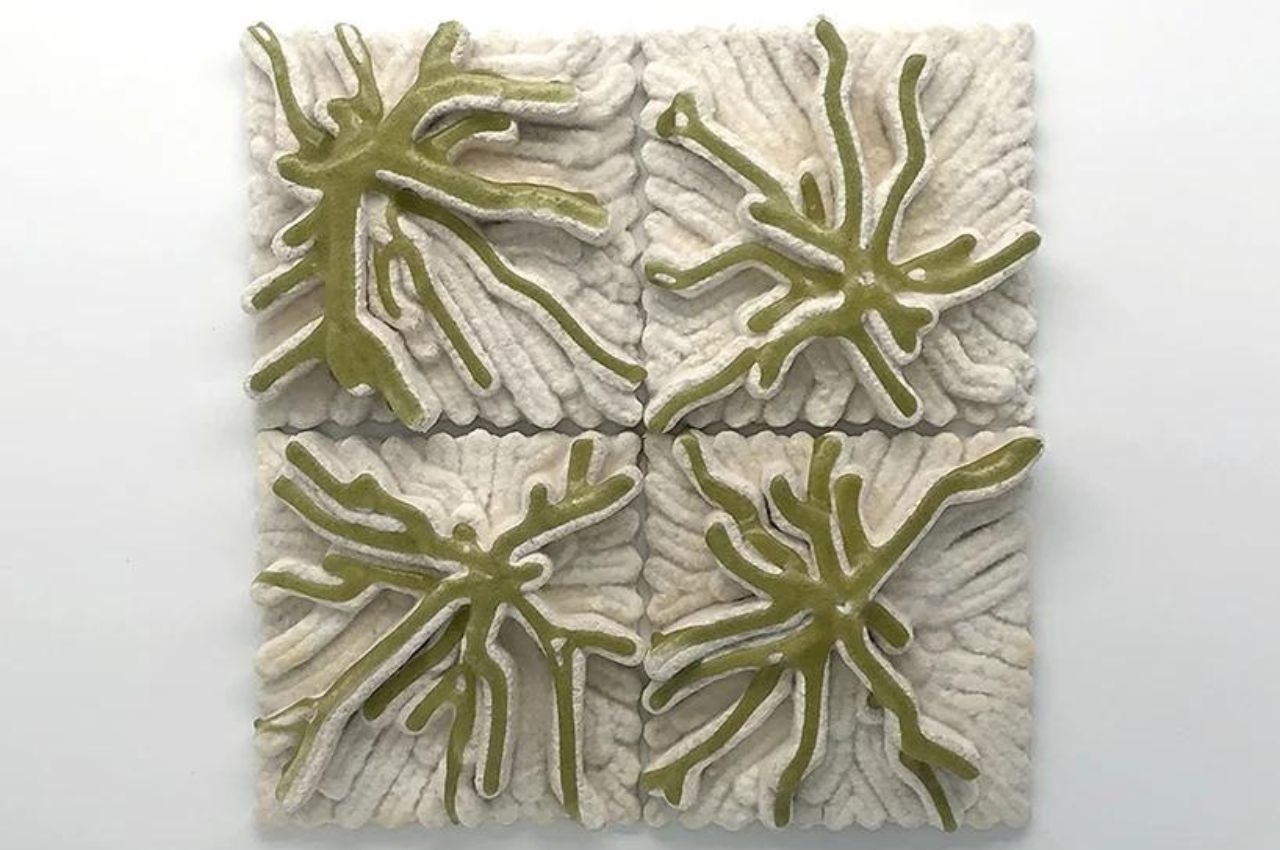
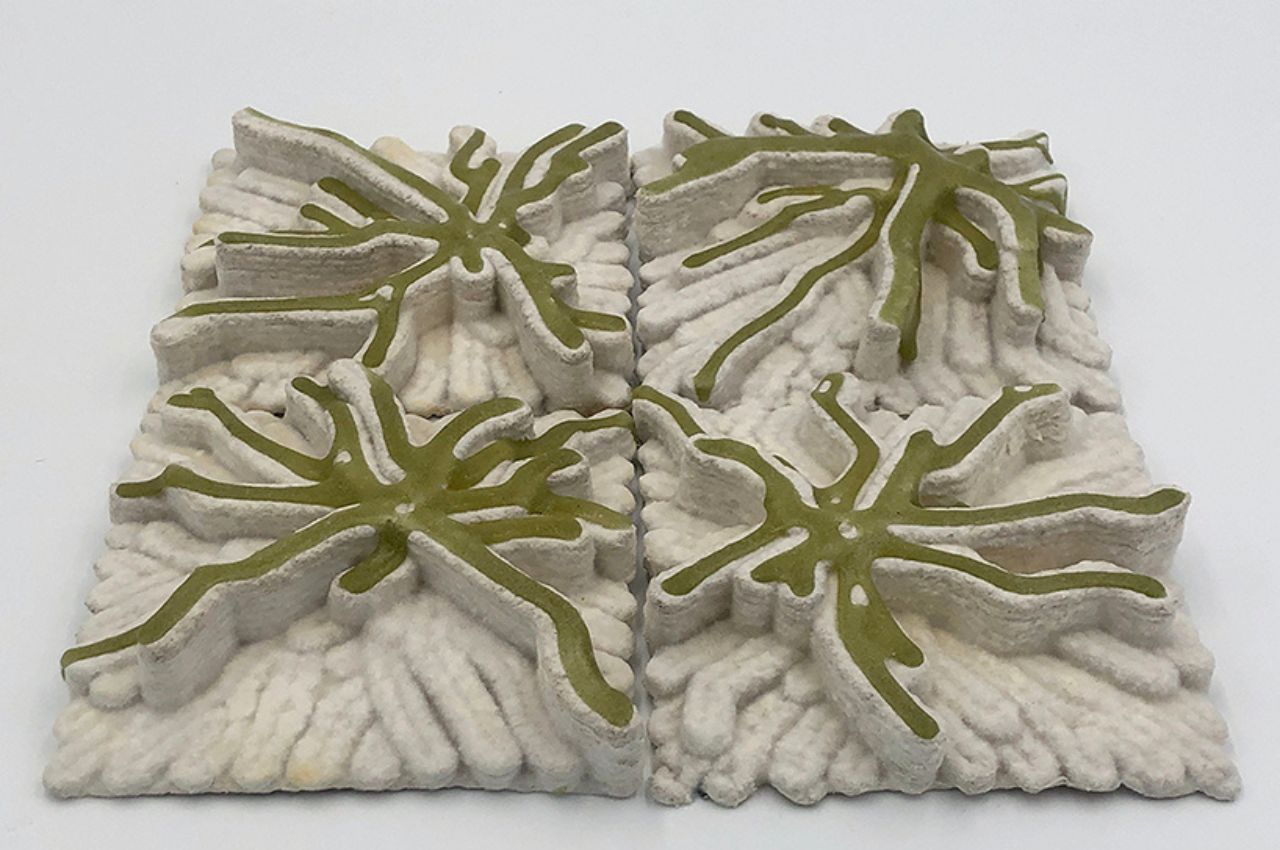
Designer: bioMATTERS
The MYCO-ALGA is a revolutionary 3D-printed tile system. Crafted from natural waste and living organisms, these tiles offer a unique, organic aesthetic. These tiles use sustainable processes, including 3D printing and organism cultivation to be transformed into lightweight yet sturdy tiles. Enhanced with bio-pigments from harvested algae, each tile boasts a visually striking, non-repeating pattern, resembling crawling organisms. Not only visually captivating but also 100% sustainable and biodegradable. Redefine the look of your kitchen space with MYCO-ALGA tiles—a conversation piece that’s both eco-friendly and stylish.
6. Experiment with Moroccan Tiles
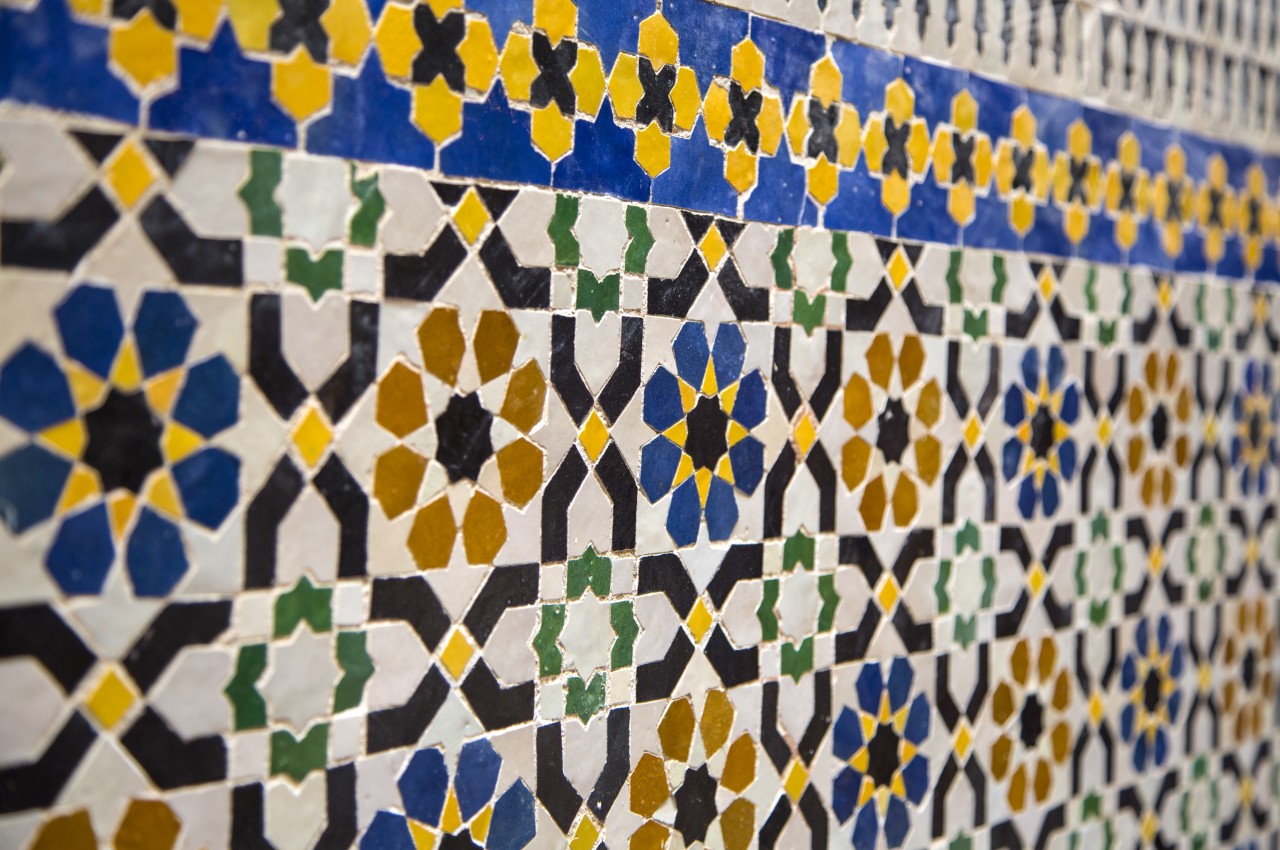
Image courtesy of: BGStock72
The vibrant hues and intricate patterns of Moroccan tiles enhance the appeal of any kitchen backsplash, infusing it with a distinctive blend of geometric motifs and rich colors. These vibrant tones not only elevate the aesthetic but also imbue the kitchen design with a sense of luxury and warmth.
7. Traditional Herringbone Pattern

Image courtesy of: pro_creator
The stunning herringbone pattern elevates the appearance of any kitchen backsplash and can be created using simple tiles arranged strategically. The resulting joint lines form an intriguing pattern that injects dynamism into the walls. Herringbone consists of equally sized rectangular pieces arranged in a staggered zig-zag layout.
8. Go for Azulejos Tiles
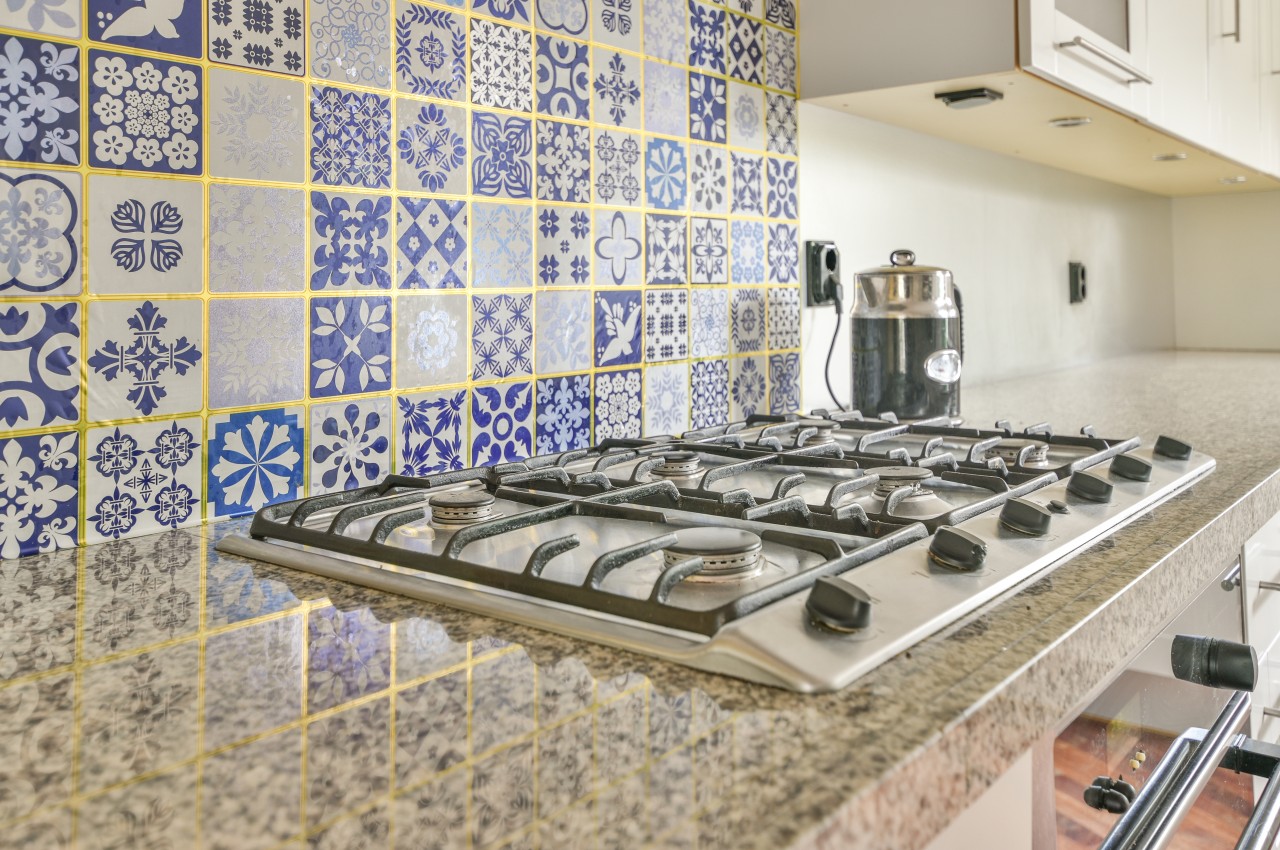
Image courtesy of: pro_creator
Azulejo represents a style of tin-glazed ceramic tile work originating from Portugal and Spain. When used as a kitchen wall backsplash, it infuses an artistic flair, elevating the ambiance to new heights. The varied shades of blue impart a refreshing and calming effect to the wall, complementing white kitchen settings seamlessly.
9. Introduce Pastel Hues
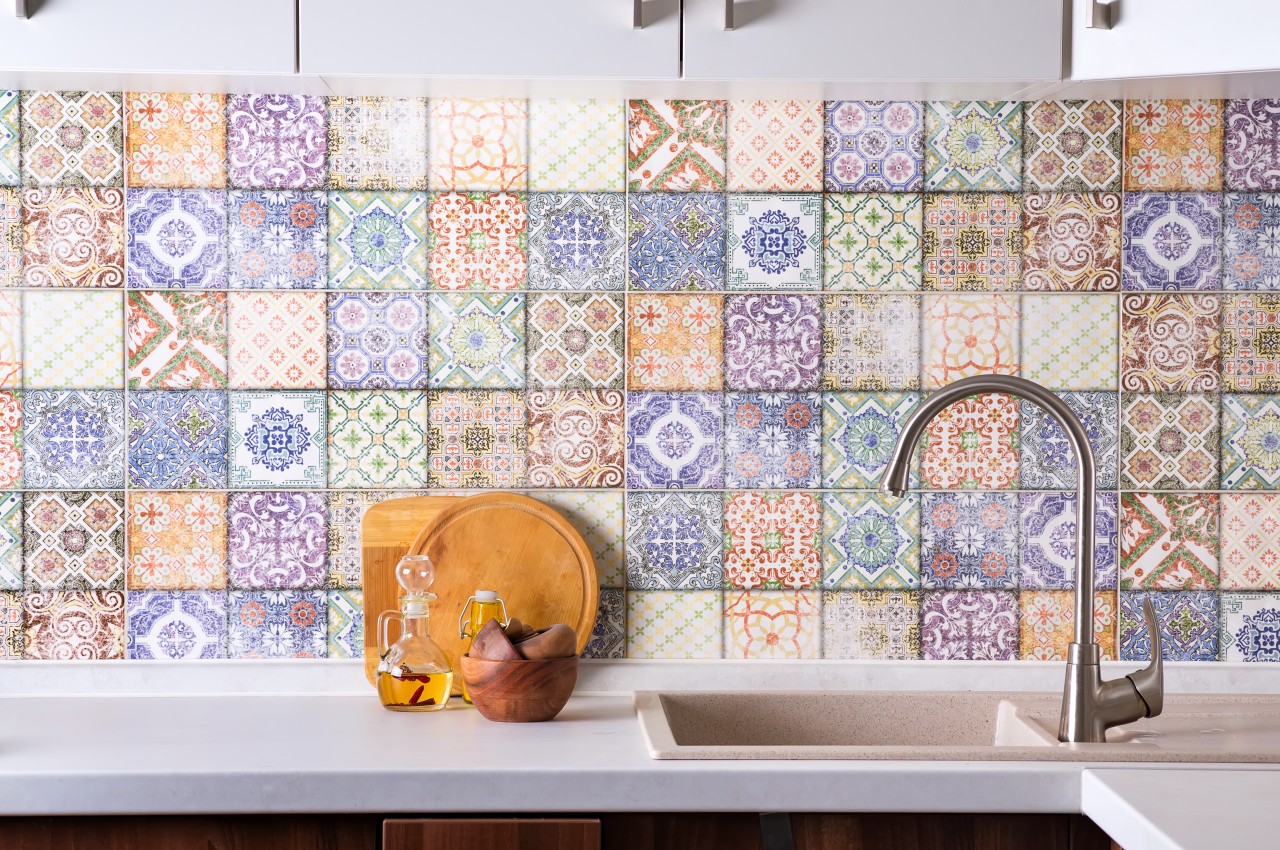
Image courtesy of: lyulkamazur
Patterned tiles in various designs are artfully arranged to create a lively pattern, yet the beauty lies in how the soft pastel hues gracefully enhance the kitchen without overwhelming the space.
10. Chevron Patterns
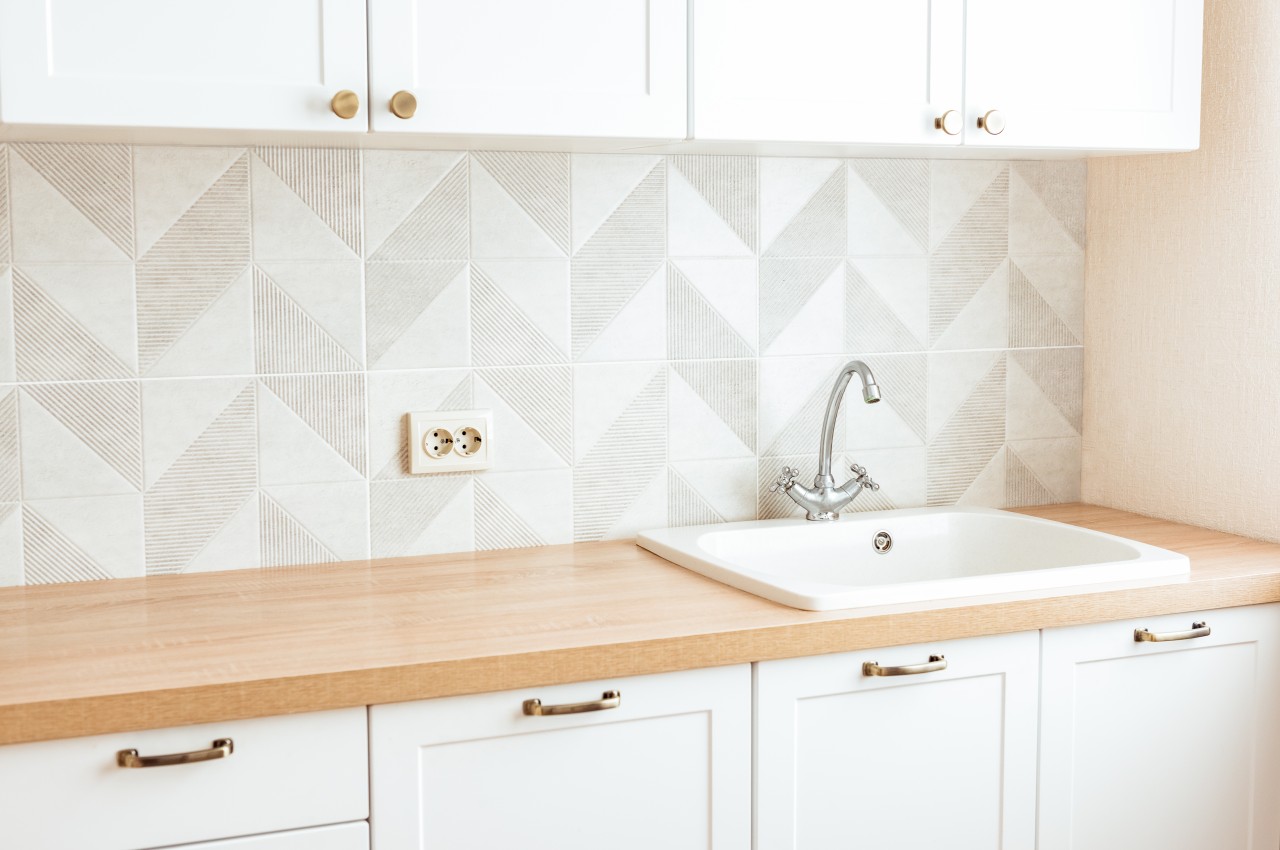
Image courtesy of: irinapavlova1
In the kitchen backsplash, the chevron pattern, alternating between light and subtly contrasting shades, enhances the overall beauty. The alternating patterns introduce an intriguing element, while the darker tones add depth. Chevron, characterized by its inverted V shape, seamlessly creates a zig-zag pattern, making it a favored choice for backsplashes.
11. Glass Mosaic Tiles
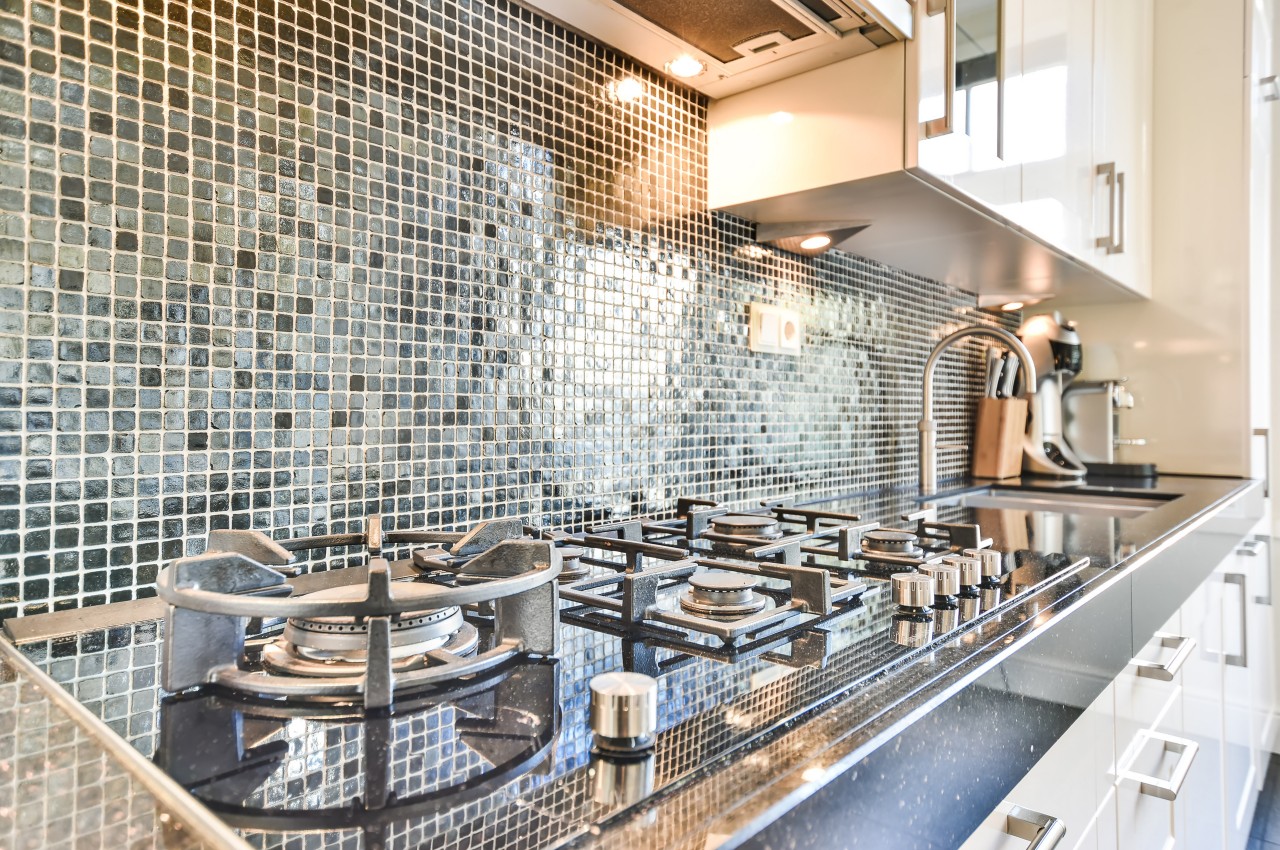
Image courtesy of: pro_creator
The reflective surface of the glass mosaic enhances the kitchen’s appearance by creating reflections of its surroundings. The multicolored glass mosaic pattern creates a pixilated effect and injects dynamism into the kitchen space, adding a luxurious touch. Additionally, the ease of cleaning glass surfaces is a notable advantage, and it lends a pixelated aesthetic to the kitchen.
12. Go for a Patterned Border
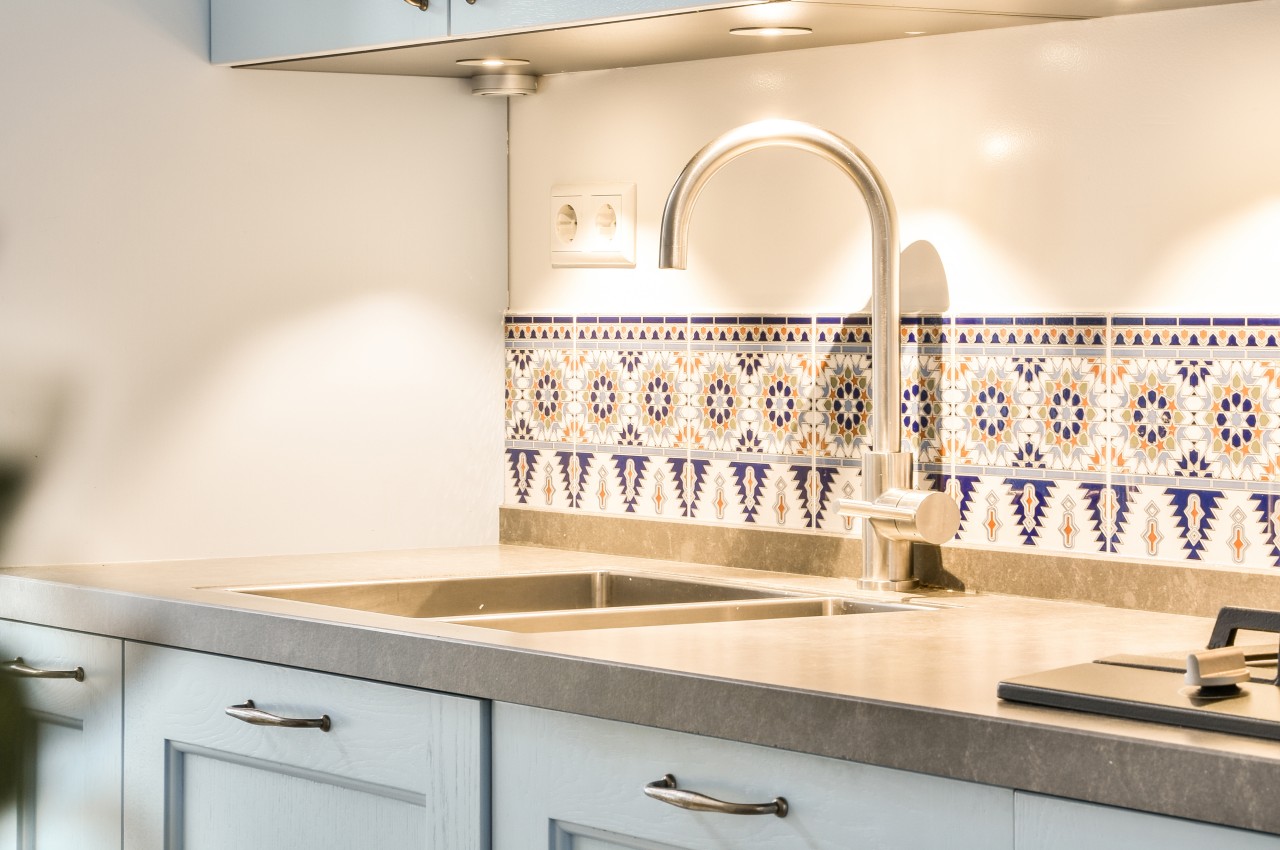
Image courtesy of: pro_creator
When using patterned tiles, the overall design can appear overwhelming and busy. However, if you still desire a simple and minimalist look with patterns, consider this approach: defining the lower section of the tiles with the pattern while keeping the upper portion plain. In this example, light grey cabinets complement the design seamlessly, creating a balanced and sophisticated appearance that feels neat and refined.
13. Use Natural Stone
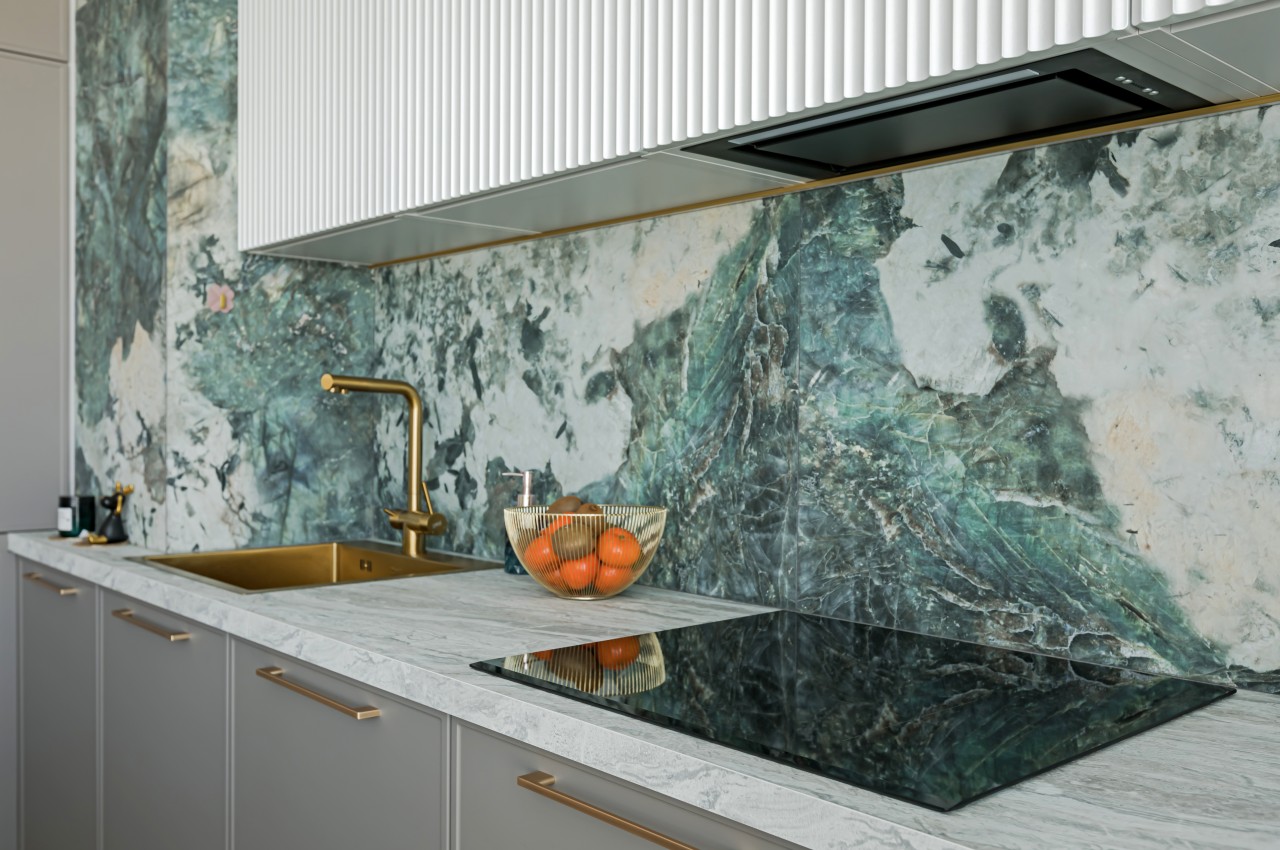
Image courtesy of: jamurka
Natural stone materials are highly durable, making them perfect for kitchen backsplashes. They possess unique grain patterns, ensuring each stone slab is one of a kind. This organic quality adds character to the kitchen space. For example, the backsplash, with its beautiful green and white hues, beautifully contrasts with the natural marble countertop. This timeless combination ensures an enduring style that never goes out of fashion.
14. Design the Carpet Flooring
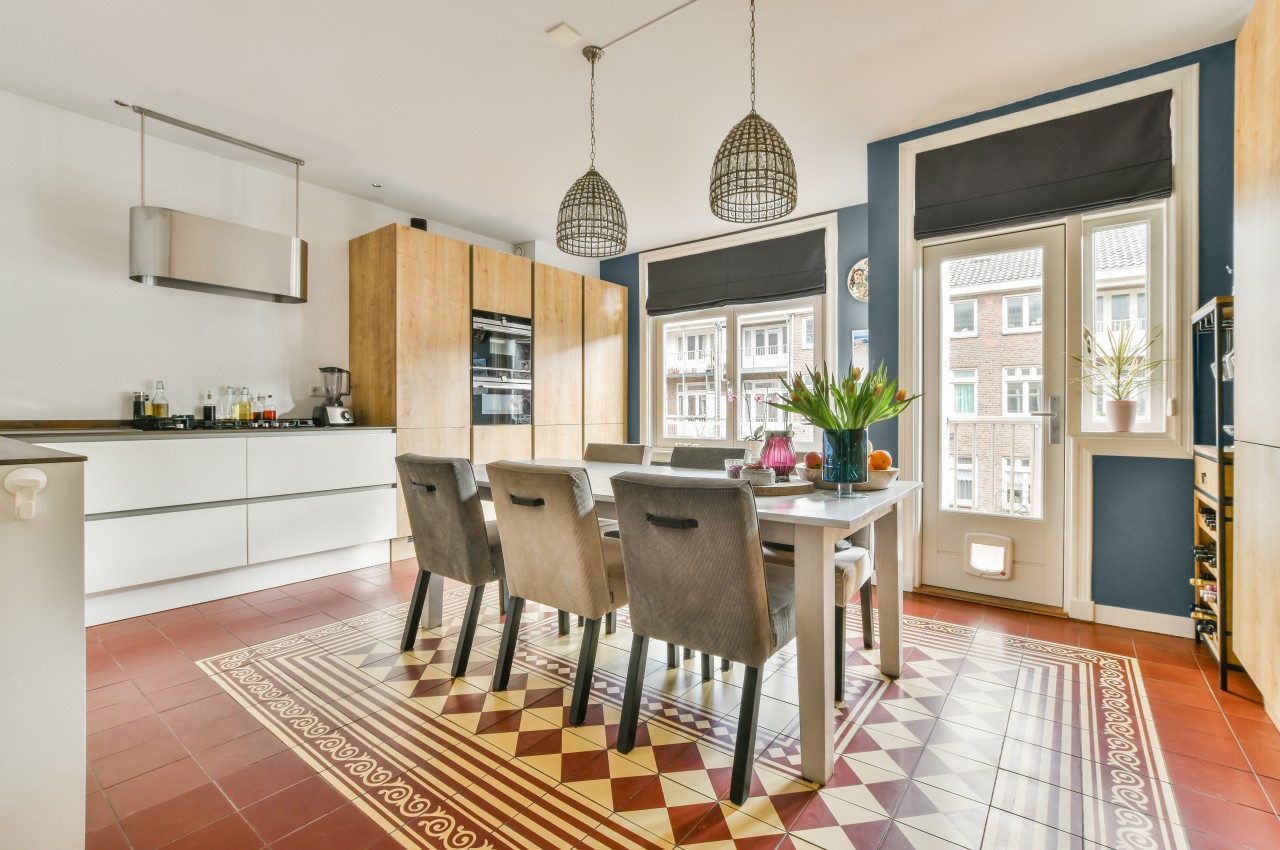
Image courtesy of: pro_creator
While carpets inject a burst of color and pattern into any space, they’re not the most practical choice for the kitchen due to the likelihood of spills and food stains. However, if you still desire patterned flooring, patterned tiles offer a solution. These tiles can be arranged to form a permanent “carpet” on the floor. Despite the aesthetic appeal of patterned flooring, its permanence is a drawback. In this kitchen and dining area, a combination of plain and patterned tiles is used for the flooring. The position of the dining table remains fixed, breaking the monotony of the terracotta-hued tiles.
15. Add Vibrancy with Bold Color Tiles
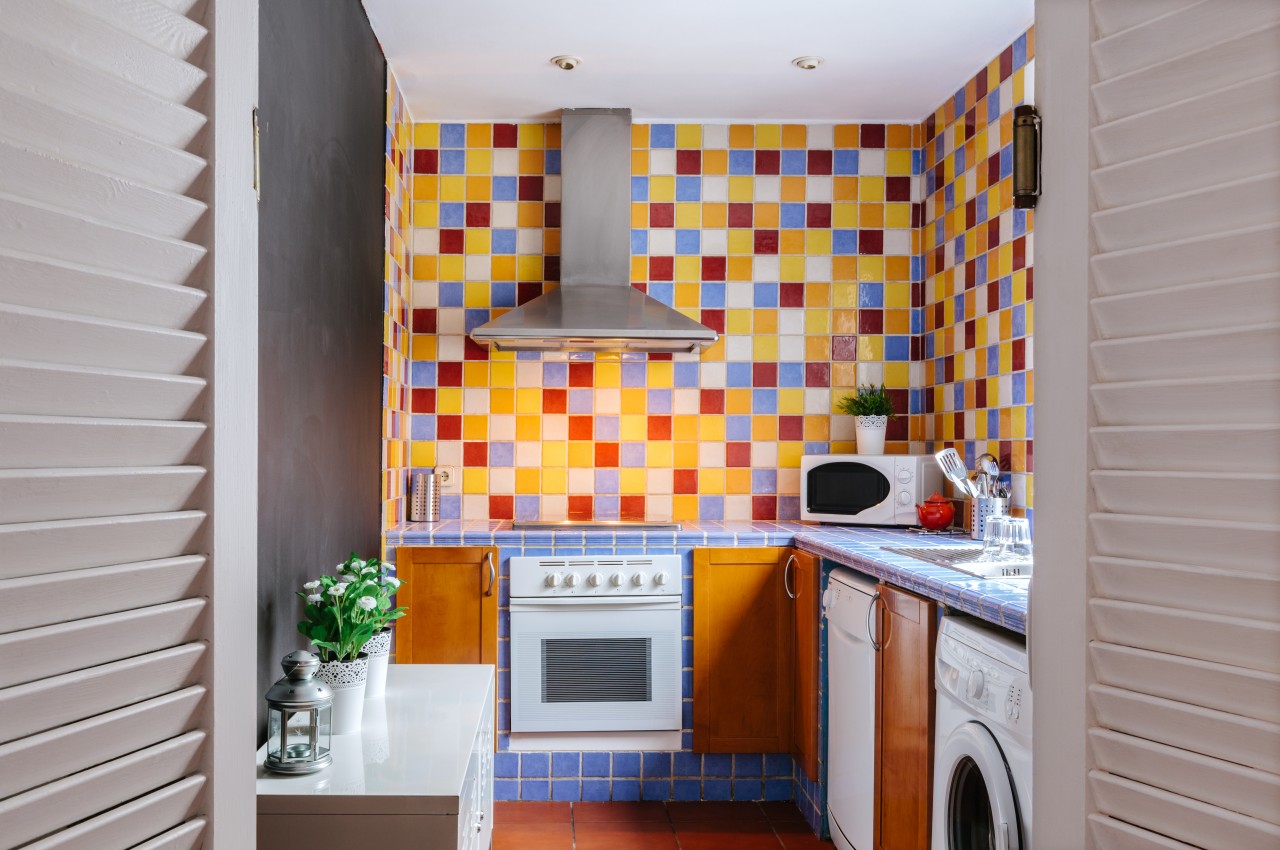
Image courtesy of: ADDICTIVE_STOCK
Instead of opting for patterned tiles, utilize a mix of bold square tiles arranged randomly to form a dynamic composition. This approach yields a striking effect, blending warm and cool colors harmoniously.
The post How to Use Patterned Tiles in the Kitchen: 15 Ways to Uplift Your Cooking Space first appeared on Yanko Design.
0 Commentaires